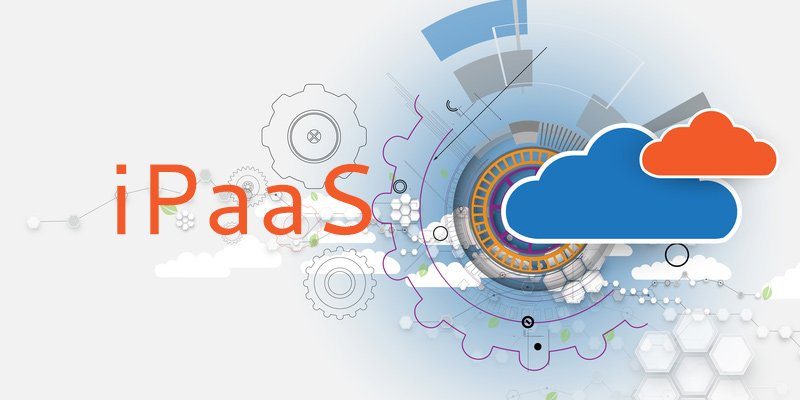Ah, the cloud. It's changing the face of IT forever, and while it's at it, it's providing us with a never-ending stream of acronyms.
You're probably already familiar with the "big three" of acronyms, the primary as-a-service delivery models IaaS, SaaS, and PaaS, (If you need a quick refresher on your cloud lingo, check out my Cloud Glossary here). But lately a new aaS has been making the rounds, and the market has even garnered a Gartner Magic Quadrant in recent years.
The technology in question? Integration Platform as a Service, or iPaaS. Another acronym, just what we needed right?
All jokes aside, iPaaS is a fast-growing market, and its growing for a reason. iPaaS aims to assuage that most modern of IT headaches: cloud computing growing pains. Specifically, iPaaS will help you make all of your thousands of services—in the cloud and on-premises— play nice together and scale.
In this post, we'll try to explain what iPaaS is, why it's so popular, and the different types of iPaas providers. Let's dive in.
What is iPaaS?
Let's start with a dry, technical definition, because who doesn't like that. The esteemed analysts at Gartner define iPaaS as "a suite of cloud services enabling development, execution and governance of integration flows connecting any combination of on-premises and cloud-based processes, services, applications and data within individual or across multiple organizations."
Okay, so that sounds pretty complicated, but really, it's not so bad. Let's try again.
In their definition, MuleSoft puts it in plain English: "iPaaS is a platform for building and deploying integrations within the cloud and between the cloud and enterprise."
Starting to make sense?
iPaaS is really more of a solution than a set of tools, and it's a solution to one of the biggest challenges facing modern IT teams: the need to integrate multiple cloud and on-premises services securely and reliably.
With iPaaS, IT teams can build integrations that will connect cloud and on-premises services, and deploy those integrations easily, without the need to fiddle with hardware or middleware.
An iPaaS solution is a little bit like a mechanic building a custom car... you pick out the parts you want, such as a custom exhaust or intake manifold, and they put it all together and make it work.
Why Do You Need iPaaS?
In short, because integration has gotten really, really complicated. The rapid growth and adoption of cloud services is shifting
It's still possible for IT departments to handle integration themselves, but it's become increasingly expensive, in both resources and time, and it's often faster and more efficient to use a third-party IPaaS provider to do the job.
IPaaS is scalable to your needs, and supports real-time integration. Best of all it gives you a consistent structure for your integration, so you're not starting over every time you need to integrate a new service.
With all of your platform management happening in one tool, you can reduce the time and energy spent on integrations, and your IT costs.
Key iPaaS Features
Key features of iPaaS include "the execution of integration flows, the development and lifecycle management of integrations, and the management and monitoring of application flows," according to MuleSoft. And of course, essential cloud features such as
multi-tenancy, elasticity, scalability, and self-provisioning. The core value of iPaaS comes from a strong and broad set of connectors to various SaaS, PaaS, and IaaS cloud services, and the ability to quickly add new services as needed. The ability
to connect legacy, on-premises systems to the cloud and hybrid architectures is also vital.
A robust iPaaS tool will also come with some built-in monitoring alerting capabilities for connections and connected applications, as well as some
limited governance toolsets.
Two Flavors of iPaaS Providers
That said, because the iPaaS market is relatively new, there's still no standard way of providing those capabilities. According to Gartner's most recent Magic Quadrant on iPaaS, the market has split in two, with solutions providers opting for two distinct
paths: wide use-case, or niche.
For some businesses, it will be enough to settle for a niche iPaaS product that focuses on a specific area of integration, such as eCommerce, but for larger businesses, or those with many varying integration
needs, it can be a smarter move to go with something more robust, that can grow and scale with your integration needs.
iPaaS for File Transfer
So we've covered the meat and potatoes of iPaaS, but what about benefits of integrating file transfer with iPaaS solutions? As it turns out, they're very similar to the overall benefits of iPaaS. iPaaS helps you cobble together hundreds, or thousands of disparate applications and systems, but what's the value in that, if those applications and systems can't then communicate in a secure and reliable manner? When you integrate secure file transfer with your iPaaS solutions, you can do just that. For example you could create a flow that transfers a file from an Amazon S3 bucket to MOVEit Transfer Server, and notifies recipients via a Slack channel.
MOVEit and MuleSoft
For MOVEit 2019, we're happy to announce the new MOVEit Transfer connector to MuleSoft’s Anypoint Exchange.
It's our hope that this connector will help our customers solve the integration headaches that are so common in the modern IT environment by letting them easily integrate secure managed file transfer capabilities into their Mule applications, leveraging the power of Ipswitch’s MOVEit product family.
MOVEit Transfer keeps important files and data secure when information is at rest or in transit. It is ideal whenever you handle data that requires integrity checks, audit trails, or robust policies and controls needed to ensure confidentiality.
From Mule applications, the connector can remotely interface with Ipswitch MOVEit Transfer to perform a rich set of file operations. The MOVEit Transfer Server is available via either a cloud-based service or a backend server.
To learn how to leverage this integration, check out our demo video and our blog post on the subject.


